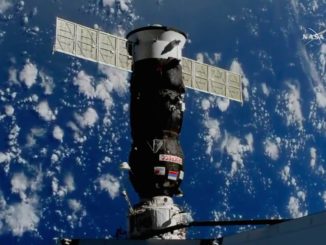
Two launches of Chinese rockets Friday and Sunday successfully placed Earth-imaging and technology demonstration satellites into orbit. The two missions, which took off from different spaceports, flew board Long March 11 and Long March 2D rockets.
A four-stage Long March 11 launcher fired out of a mobile canister at 2013 GMT (4:13 p.m. EDT) Friday and lit its solid-fueled first stage to soar into space from the Xichang launch base in southwestern China’s Sichuan province.
Two days later, at 0853 GMT (4:53 a.m. EDT) Sunday, a Long March 2D booster lifted off from the Jiuquan space center more than 1,000 miles (1,600 kilometers) to the northwest of Xichang.
The two Long March rocket flights marked the 11th and 12th orbital launch attempts from China so far this year, including two launch failures.
The Long March 11 rocket delivered two “technology experiment” satellites into orbit, according to China’s state-run Xinhua news agency. No additional information about the satellites — designated XJS G and H — was released by Chinese officials.
Designed to loft small satellites into orbit, the Long March 11 measures around 69 feet (21 meters) tall and produces around 260,000 pounds of thrust at liftoff, according to the China Academy of Launch Vehicle Technology, the rocket’s state-owned contractor.
The Long March 11 can carry up to 1,100 (500 kilograms) pounds of payload to a 310-mile-high (500-kilometer) sun-synchronous polar orbit, according to CALT.
U.S. military tracking data indicated the Long March 11 launch Friday released its two satellite payloads in an orbit roughly 300 miles (480 kilometers) above Earth, with an inclination of 35 degrees to the equator.
Friday’s launch marked the first time a Long March 11 rocket has lifted off from Xichang, following seven previous Long March 11 launches from the Jiuquan facility in northwest China, and one from a sea-based launch pad.
The launch Friday also debuted a larger 6.6-foot-wide (2-meter) payload shroud to allow more volume for satellites on top of the Long March 11 rocket, CALT said.
The government-owned aerospace contractor said it plans to carry out multiple Long March 11 flights later this year, including missions staged from land and sea-based platforms.

The launch of a Long March 2D rocket Sunday carried an Earth observation satellite and a secondary payload into orbit.
The two-stage, liquid-fueled Long March 2D deployed remote sensing satellite named Gaofen 9-02, which “will be used in land surveys, urban planning, road network design and crop yield estimates, as well as disaster relief,” Xinhua said.
The spacecraft is the second Chinese satellite to have the Gaofen 9 name, following a satellite launched in 2015. Xinhua, which is overseen by the Chinese government, described the satellite launched in 2015 with nearly identical language to the new spacecraft sent into orbit Sunday.
Like the satellite launched in 2015, Xinhua said the Gaofen 9-02 spacecraft has an imaging resolution of about 3.3 feet, or 1 meter. Its primary instrument is an optical camera.
The Gaofen 9-02 satellite launched into a lower orbit than the previous Gaofen 9 spacecraft. U.S. military data showed the satellite flying in a north-south polar orbit around 304 miles (490 kilometers) in altitude, with an inclination of 97.3 degrees to the equator.
China says the Gaofen series of satellites are managed by civilian officials.
A privately-developed secondary payload on the same Long March 2D flight Sunday is owned by Beijing-based HEAD Aerospace. The HEAD 4 satellite will join the company’s fleet of small spacecraft providing tracking of ships and aircraft, environmental monitoring and asset supervision services.
Email the author.
Follow Stephen Clark on Twitter: @StephenClark1.



